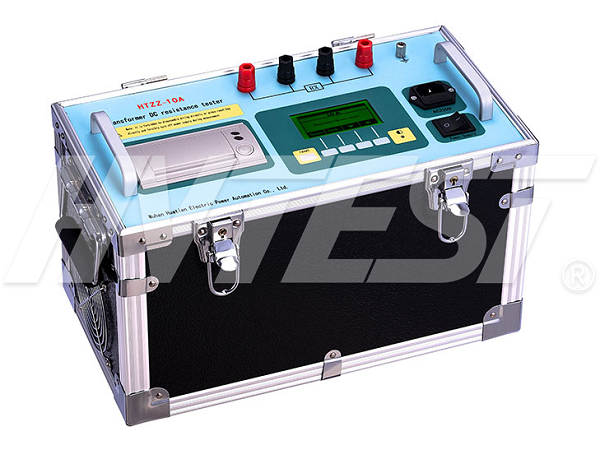Detection Technology
On-site test method of DC resistance tester
There are many methods to test DC resistance on site, and the mainstream methods include DC voltage drop method and bridge method. The principle of the DC voltage drop method is to pass a DC current through the winding under test, generate a voltage drop on the resistance of the winding, measure the current through the winding and the voltage drop on the winding, and calculate the DC resistance of the winding according to Ohm's law ; The bridge law is to measure the DC resistance through the principle of bridge balance, there are two kinds of double-arm bridge and single-arm bridge. In addition, there are high-voltage charging and low-voltage measurement methods, flux pumping methods, second-order oscillation methods, dynamic measurement methods, short-circuit demagnetization methods, and constant current sources.
In order to ensure that the measured data is accurate and reliable, the DC resistance tester. When measuring the DC resistance, if it is found to be unbalanced. Follow the steps below to eliminate interference to avoid unnecessary losses due to misjudgment.
1) First, check the test lead clamp, and the elasticity and contact surface are good. The test lead has no broken wires, eliminating the influence of the test lead and test equipment.
2) Fully stand and discharge. Eliminate the influence of residual charge or induced potential.
3) Switch the tap switch several times, if the unbalance rate is not significantly reduced. And the unbalance rate of the DC resistance of each gear is almost the same, which basically eliminates the influence of poor tap switch contact.
4) Perform temperature conversion for comparison with the previous test.
5) According to the data in the factory and handover reports. To determine whether the DC resistance unbalance rate exceeds the standard due to the difference in lead resistance during manufacturing.
After completing these steps. If the DC resistance still exceeds the standard, the transformer may have the following defects: ① The winding connection is not tight or the welding quality is poor. ② Internal failure of the tap changer. ③ The winding or lead wire is broken. ④ Short circuit between winding layers and turns.
Megger measurement steps | 2020/10/5 | reading756time Precautions for dry-type test transformers | 2020/10/4 | reading780time return


